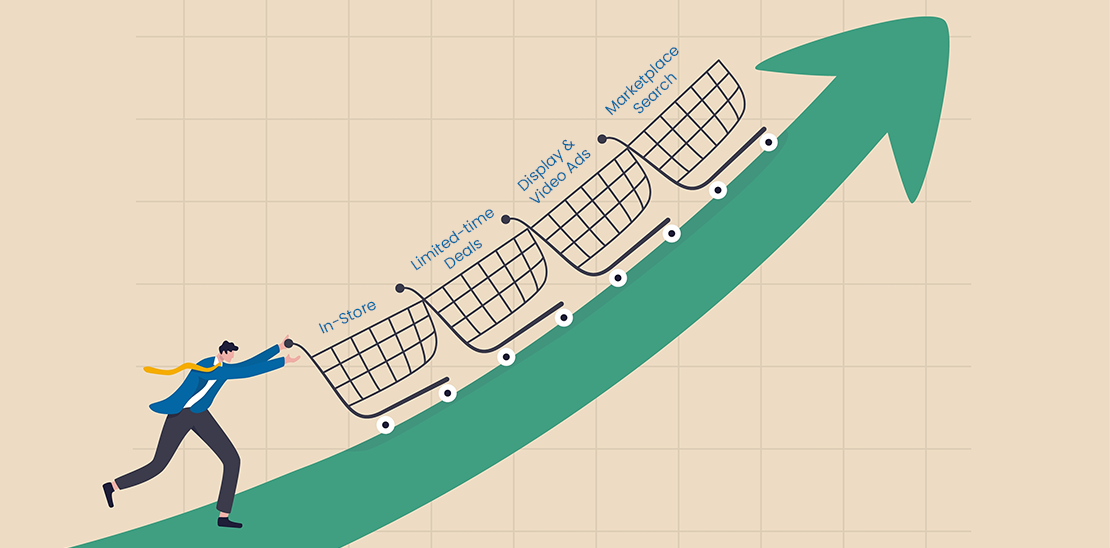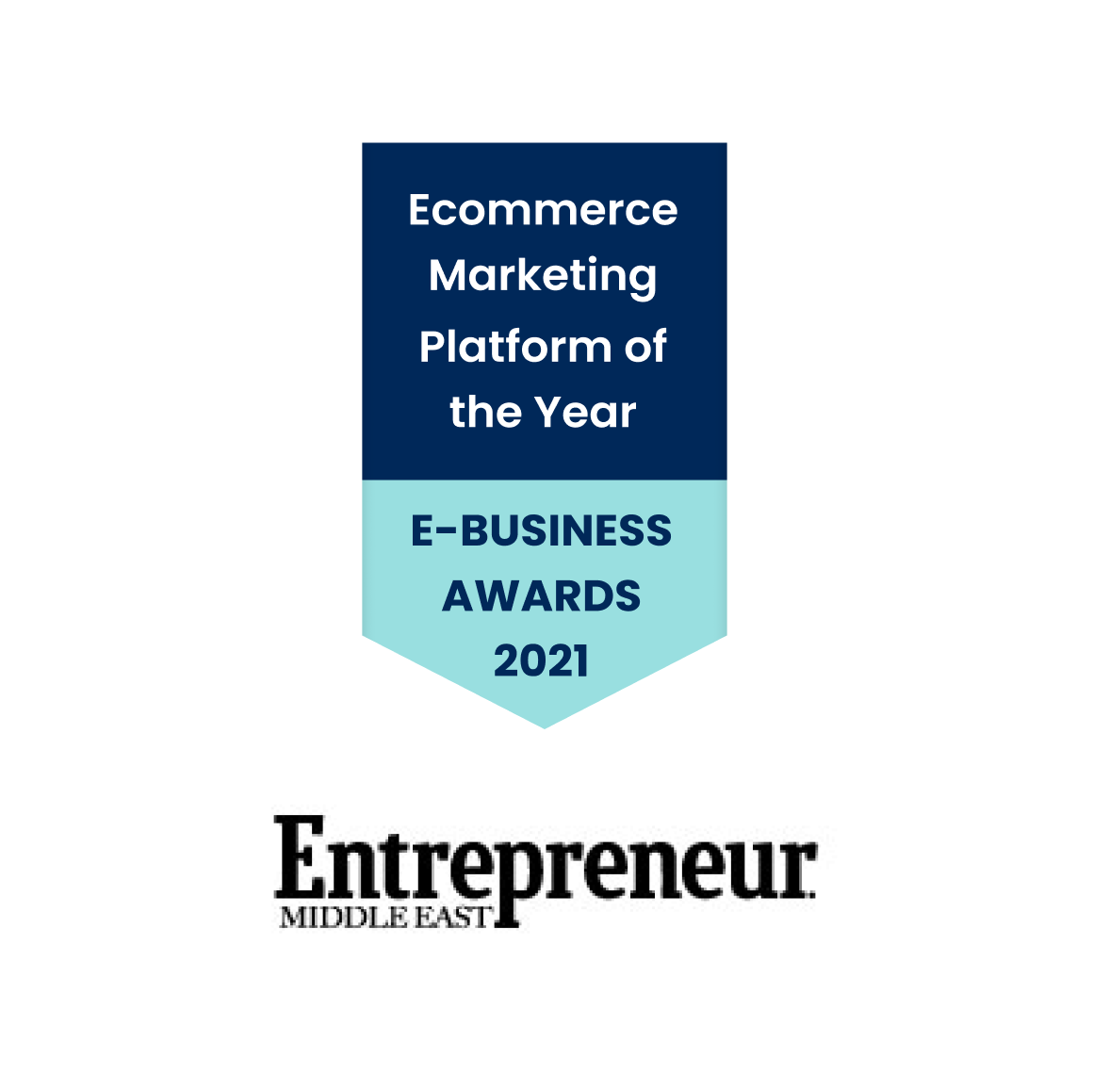
Boosting Profits Through Effective Retail Media Advertising Techniques for 2024
Varun | May 24, 2024
Share via
As we step into 2024, retail media advertising is emerging as a powerhouse for driving profits and engagement, particularly in the Middle East and North Africa (MENA) region. The unique ability of retail media advertising to blend digital precision with retail convenience presents a golden opportunity for brands to enhance their marketing strategies and reach targeted consumers effectively. This article delves into the intricacies of retail media advertising, its various types, benefits, and how to implement these strategies to boost profits in the MENA region. By understanding and utilizing these advertising techniques, brands can create more meaningful connections with their audience and drive substantial growth.
Retail media advertising involves leveraging the digital and physical presence of retail platforms to promote products and brands. This type of advertising integrates seamlessly with the shopping experience, presenting advertisements that are contextually relevant to consumers. It allows brands to connect with shoppers at the point of purchase, thus enhancing the likelihood of conversion. In the MENA region, where consumers are increasingly adopting digital shopping habits, retail media advertising plays a crucial role in influencing purchasing decisions and driving sales. By understanding the dynamics of retail media, brands can create more personalized and effective marketing campaigns that resonate with their target audience.
Different Types of Retail Media Advertising with Instances
Retail media advertising encompasses various formats, each designed to capture consumer attention at different touchpoints in the shopping journey. Here’s a detailed breakdown of the main types:
1) In-Store Advertising
In-store advertising refers to promotional displays and interactive ads placed within physical retail locations. This can include digital screens showcasing product ads, interactive kiosks, and traditional posters. These in-store advertisements not only enhance the shopping experience but also drive impulse purchases by capturing the consumer’s attention at the right moment.
Instances
Digital billboards in shopping malls that display dynamic product advertisements and special offers to shoppers.
Interactive product demos in electronics stores that allow customers to engage with new technologies and understand their features better.
2) Featured Product Sections
Retailers often allocate premium space on their digital platforms to showcase featured products. These sections are designed to highlight specific items, often based on consumer trends or promotional campaigns. By placing products in these featured sections, brands can increase visibility and drive higher sales.
Instances
Featured products on the homepage of an e-commerce site, prominently displayed to attract shoppers’ attention. Highlighted items in a mobile app’s shopping feed that are curated based on user preferences and browsing history.
3) Limited Time Deals
Limited time deals create a sense of urgency, encouraging consumers to make quick purchasing decisions. These deals are prominently displayed to catch the shopper’s eye and drive immediate sales. The urgency factor plays a significant role in converting browsing into buying.
Instances
Flash sales on an online retail platform, offering steep discounts for a limited period to boost quick sales.
Time-bound discounts displayed on in-store digital screens, prompting shoppers to take advantage of special offers before they expire.
4) Related Product Sections
These sections recommend products that complement the items a consumer is currently viewing or has previously purchased. They aim to increase basket size by suggesting additional purchases. This cross-selling technique can significantly boost the average order value.
Instances
“Customers also bought” recommendations on product pages that suggest complementary products to enhance the shopping experience.
Bundled product suggestions in checkout lanes, encouraging shoppers to add related items to their cart before completing their purchase.
5) Marketplace Search Results
Advertising within search results ensures that a brand’s products appear at the top when consumers search for related items. This increases visibility and the likelihood of conversion, as consumers are more likely to click on the top results.
Instances
Sponsored product listings on Amazon that appear at the top of search results, giving brands a competitive edge.
Paid search results on an online marketplace, ensuring that a brand’s products are seen first by potential buyers.
6) Display & Video Ads
These ads appear on digital retail platforms and can include banner ads, video commercials, and interactive content. They are designed to engage users visually and drive them towards a purchase. Visual content is highly effective in capturing consumer interest and conveying key product benefits.
Instances
Banner ads on a retailer’s website that showcase new product launches and special promotions.
Video ads in a retail mobile app that provide engaging visual content to highlight product features and benefits.
7) Email Ads
Retailers leverage their email lists to send targeted advertisements directly to consumers’ inboxes. These ads can promote new products, special offers, or personalized recommendations, driving repeat purchases and customer loyalty.
Instances
Promotional emails with exclusive offers that incentivize customers to make a purchase.
Product recommendation emails based on past purchases, providing personalized suggestions to enhance the shopping experience.
Also read: A Comprehensive Guide to Sponsored Listings for Retail Media Advertising
Benefits of Retail Media Advertising
Retail media advertising offers several advantages that make it an attractive option for brands aiming to boost their profits. By effectively leveraging these benefits, brands can enhance their marketing strategies and achieve better results.
1) Enhanced Targeting
Retail media platforms provide rich data on consumer behavior, allowing for precise targeting of ads. This enables brands to reach the right audience with the right message at the right time.
2) Increased Conversion Rates
Ads are placed at strategic points in the shopping journey, enhancing the likelihood of conversions. This targeted approach helps in driving higher sales and improving overall campaign effectiveness.
3) Higher ROI
By reaching consumers at the point of purchase, retail media ads typically deliver a higher return on investment. The direct connection with shoppers ensures that advertising budgets are used efficiently and effectively.
4) Seamless Integration
Ads blend naturally with the shopping experience, making them less intrusive and more effective. This seamless integration enhances the overall customer experience and drives brand loyalty.
5) Detailed Analytics
Retail media platforms offer comprehensive analytics, helping brands measure the effectiveness of their campaigns. These insights allow brands to continuously optimize their strategies and achieve better results.
How to Implement Retail Media
Implementing retail media advertising requires a strategic approach to ensure maximum effectiveness. Here are the key steps to successfully integrate retail media advertising into your marketing strategy:
1) Understand Your Audience
Analyze consumer behavior and preferences to tailor your ads accordingly. Utilize data analytics to gain insights into your target audience’s shopping habits and preferences.
Use data analytics to identify key demographic segments within the MENA region. This targeted approach ensures that your ads resonate with the right audience, driving higher engagement and conversions.
2) Choose the Right Platforms
Select retail platforms that align with your target audience. Evaluate the reach and engagement levels of different platforms to determine the best fit for your brand.
Consider both online and offline retail channels for a comprehensive approach. A multi-channel strategy ensures that you can reach consumers wherever they are, enhancing your overall marketing effectiveness.
3) Develop Engaging Creative Content
Create visually appealing and interactive ads that capture consumer attention. Use high-quality visuals, compelling copy, and interactive elements to make your ads stand out.
Incorporate localized content to resonate with the MENA audience. Tailoring your ads to reflect local culture and preferences can significantly enhance their effectiveness and drive better results.
4) Leverage Data and Analytics
Use data-driven insights to refine your targeting and improve ad relevance. Continuously monitor and analyze campaign performance to identify areas for improvement.
Continuously monitor and analyze campaign performance to make necessary adjustments. This iterative approach ensures that your campaigns are always optimized for maximum effectiveness.
5) Optimize Placement and Timing
Ensure ads are placed at strategic points in the shopping journey. Identify the key touchpoints where your target audience is most likely to engage with your ads.
Time your ads to coincide with peak shopping periods or special events. Leveraging these high-traffic times can significantly boost your ad’s visibility and impact.
6) Collaborate with Retail Partners
Work closely with retail partners to gain insights and optimize ad placements. Collaboration can provide valuable insights and enhance your overall advertising strategy.
Leverage retailer data and expertise to enhance your advertising strategies. Retail partners can offer unique insights and data that can help you refine your targeting and ad placements.
Also read: A Guide to Maximizing Retail Media Advertising Spends in Ecommerce
The landscape of advertising in the MENA region is undergoing a significant transformation, with retail media advertising emerging as a powerful tool for brands. As digital and traditional retail converge, understanding and leveraging retail media advertising becomes essential for driving profits and engagement. By effectively implementing these advertising techniques, brands can create more personalized and impactful marketing campaigns, connecting with consumers in meaningful ways.
Realizing the full potential of retail media advertising requires overcoming existing barriers and challenges. From technological limitations to outdated buying strategies, advertisers must navigate various obstacles to fully capitalize on this opportunity. However, with innovation, perseverance, and a strategic approach, these barriers can be overcome, paving the way for more effective and impactful advertising campaigns.
Ultimately, retail media advertising offers brands in the MENA region a unique opportunity to connect with consumers and deliver compelling messages that drive engagement and conversion. By embracing this platform and adapting their strategies accordingly, advertisers can position themselves at the forefront of digital advertising innovation and unlock new avenues for growth and success.
Share via







